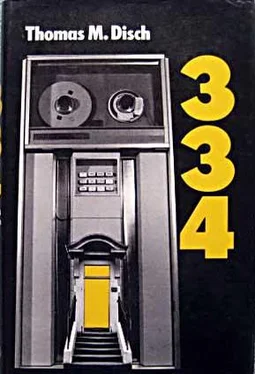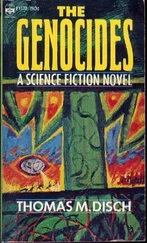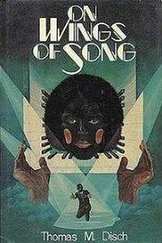“It’s a happy ending, certainly.” She touched the back of her hand to his cheek where he was experimenting with sideburns.
“I wonder why it was open, though. After all this time.”
“Well, in five years we can go and ask.”
He turned, smiling, to face her, and with the same gesture, touched her cheek, gently, and just for now they were happy. They were together again, on the balcony, on a summer evening, and they were happy.
Boz and Milly. Milly and Boz.
There were seven Alexandrians involved in the Battery plot—Jack, who was the youngest and from the Bronx, Celeste DiCecca, Sniffles and Mary Jane, Tancred Miller. Amparo (of course), and of course, the leader and mastermind. Bill Harper, better known as Little Mister Kissy Lips. Who was passionately, hopelessly in love with Amparo. Who was nearly thirteen (she would be, fully, by September this year), and breasts just beginning. Very very beautiful skin, like lucite. Amparo Martinez.
Their first, nothing operation was in the East 60’s, a broker or something like that. All they netted was cufflinks, a watch, a leather satchel that wasn’t leather after all, some buttons, and the usual lot of useless credit cards. He stayed calm though the whole thing, even with Sniffles slicing off buttons, and soothing. None of them had the nerve to ask. though they all wondered, how often he’d been through this scene before. What they were about wasn’t an innovation. It was partly that, the need to innovate, that led them to think up the plot. The only really memorable part of the holdup was the name laminated on the cards, which was, weirdly enough, Lowen, Richard W. An omen (the connection being that they were all at the Alexander Lowen School), but of what?
Little Mister Kissy Lips kept the cufflinks for himself, gave the buttons to Amparo (who gave them to her uncle), and donated the rest (the watch was a piece of crap) to the Conservation booth outside the Plaza right where he lived.
His father was a teevee executive. In, as he would quip, both senses. They had got married young, his mama and papa, and divorced soon after but not before he’d come to fill out their quota. Papa, the executive, remarried, a man this time and somewhat more happily. Anyhow it lasted long enough that the offspring, the leader and mastermind, had to learn to adjust to the situation, it being permanent. Mama simply went down to the Everglades and disappeared, sploosh.
In short, he was well to do. Which is how, more than by overwhelming talent, he got into the Lowen School in the first place. He had the right kind of body though, so with half a desire there was no reason in the city of New York he couldn’t grow up to be a professional dancer, even a choreographer. He’d have the connections for it, as Papa was fond of pointing out.
For the time being, however, his bent was literary and religious rather than balletic. He loved, and what seventh grader doesn’t, the abstracter foxtrots and more metaphysical twists of a Dostoevsky, a Gide, a Mailer. He longed for the experience of some vivider pain than the mere daily hollowness knotted into his tight young belly, and no weekly stomp-and-holler of group therapy with other jejune eleven-year-olds was going to get him his stripes in the major leagues of suffering, crime, and resurrection. Only a bona-fide crime would do that, and of all the crimes available murder certainly carried the most prestige, as no less an authority than Loretta Couplard was ready to attest, Loretta Couplard being not only the director and co-owner of the Lowen School but the author, as well, of two nationally televised scripts, both about famous murders of the 20th Century. They’d even done a unit in social studies on the topic: A History of Crime in Urban America.
The first of Loretta’s murders was a comedy involving Pauline Campbell, R.N., of Ann Arbor, Michigan, circa 1951, whose skull had been smashed by three drunken teenagers. They had meant to knock her unconscious so they could screw her, which was 1951 in a nutshell. The eighteen-year-olds, Bill Morey and Max Pell, got life; Dave Royal (Loretta’s hero) was a year younger and got off with twenty-two years.
Her second murder was tragic in tone and consequently inspired more respect, though not among the critics, unfortunately. Possibly because her heroine, also a Pauline (Pauline Wichura), though more interesting and complicated had also been more famous in her own day and ever since. Which made the competition, one best-selling novel and a serious film biography, considerably stiffen Miss Wichura had been a welfare worker in Atlanta, Georgia, very much into environment and the population problem, this being the immediate pre-Regents period when anyone and everyone was legitimately starting to fret. Pauline decided to do something, viz., reduce the population herself and in the fairest way possible. So whenever any of the families she visited produced one child above the three she’d fixed, rather generously, as the upward limit, she found some unobtrusive way of thinning that family back to the preferred maximal size. Between 1989 and 1993 Pauline’s journals (Random House, 1994) record twenty-six murders, plus an additional fourteen failed attempts. In addition she had the highest welfare department record in the U.S. for abortions and sterilizations among the families whom she advised.
“Which proves, I think,” Little Mister Kissy Lips had explained one day after school to his friend Jack, “that a murder doesn’t have to be of someone famous to be a form of idealism.”
But of course idealism was only half the story: the other half was curiosity. And beyond idealism and curiosity there was probably even another half, the basic childhood need to grow up and kill someone.
They settled on the Battery because, one, none of them ever were there ordinarily; two, it was posh and at the same time relatively, three, uncrowded, at least once the night shift were snug in their towers tending their machines. The night shift seldom ate their lunches down in the park.
And, four, because it was beautiful, especially now at the beginning of summer. The dark water, chromed with oil, flopping against the buttressed shore; the silences blowing in off the Upper Bay, silences large enough sometimes that you could sort out the different noises of the city behind them, the purr and quaver of the skyscrapers, the ground-shivering mysterioso of the expressways, and every now and then the strange sourceless screams that are the melody of New York’s theme song; the blue-pink of sunsets in a visible sky; the people’s faces, calmed by the sea and their own nearness to death, line up in rhythmic rows on the green benches. Why even the statues looked beautiful here, as though someone had believed in the statues in the Cloisters, so long ago.
His favorite was the gigantic killer-eagle landing in the middle of the monoliths in the memorial for the soldiers, sailors, and airmen killed in World War II. The largest eagle, probably, in all Manhattan, his talons ripped apart what was surely the largest artichoke.
Amparo, who went along with some of Miss Couplard’s ideas, preferred the more humanistic qualities of the memorial (him on top and an angel gently probing an enormous book with her sword) for Verrazzano, who was not, as it turned out, the contractor who put up the bridge that had, so famously, collapsed. Instead, as the bronze plate in back proclaimed:
IN APRIL 1524 THE FLORENTINE-BORN NAVIGATOR
VERRAZZANO LED THE FRENCH CARAVEL LA DAUPHINE
TO THE DISCOVERY OF
THE HARBOR OF NEW YORK
AND NAMED THESE SHORES ANGOULEME
IN HONOR OF FRANCIS I KING OF FRANCE
“Angouleme” they all agreed, except Tancred, who favored the more prevalent and briefer name, was much classier. Tancred was ruled out of order and the decision became unanimous.
Читать дальше












